
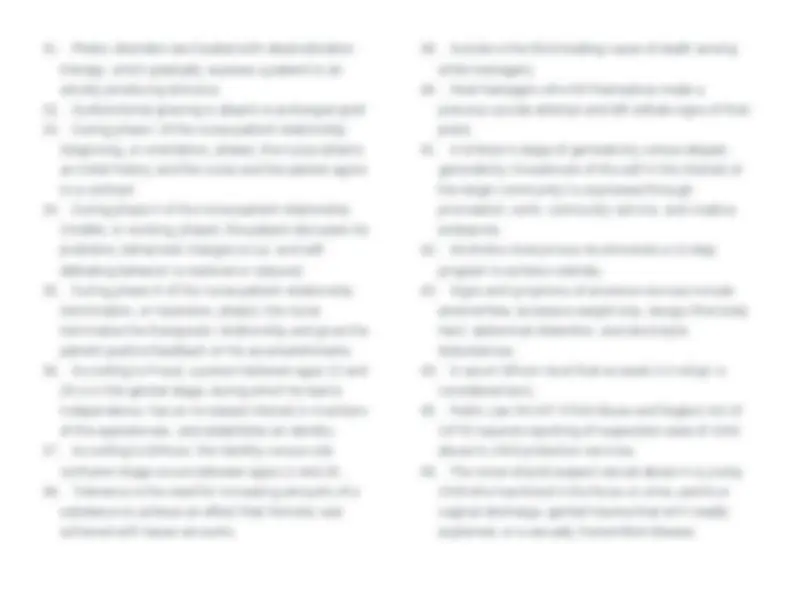
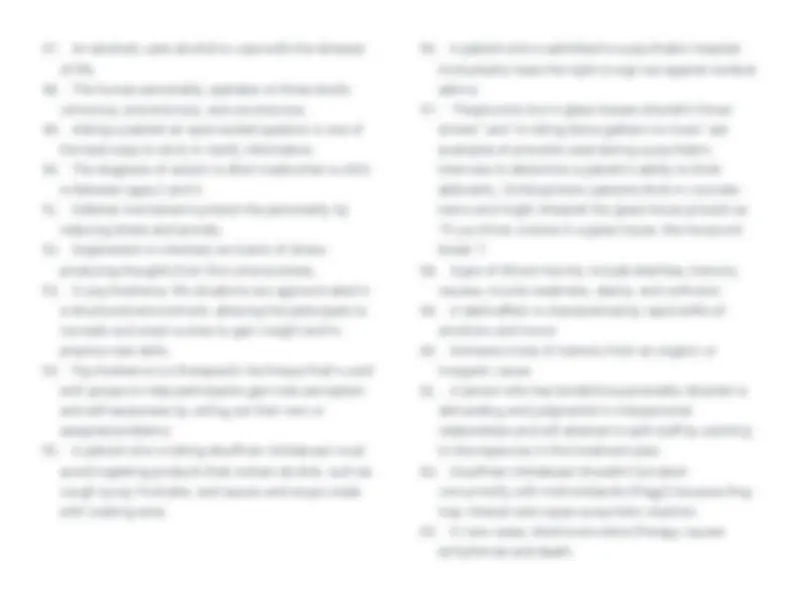
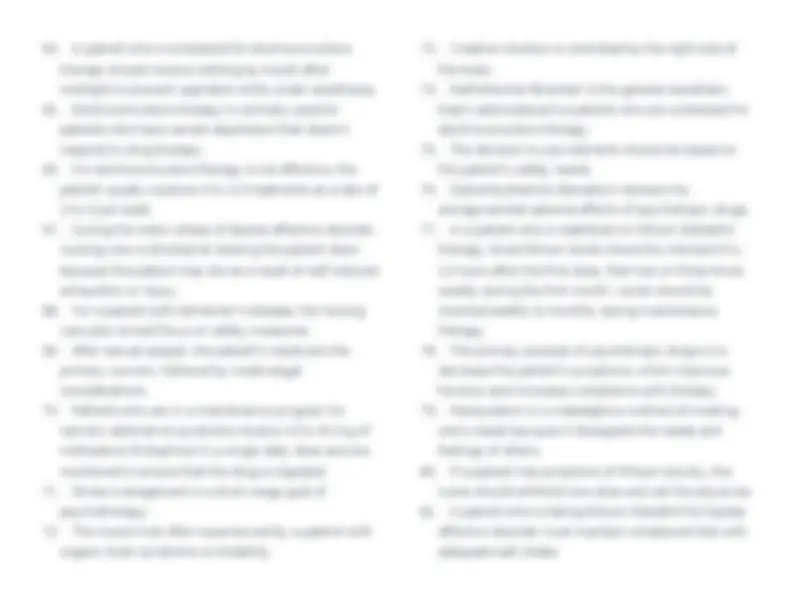
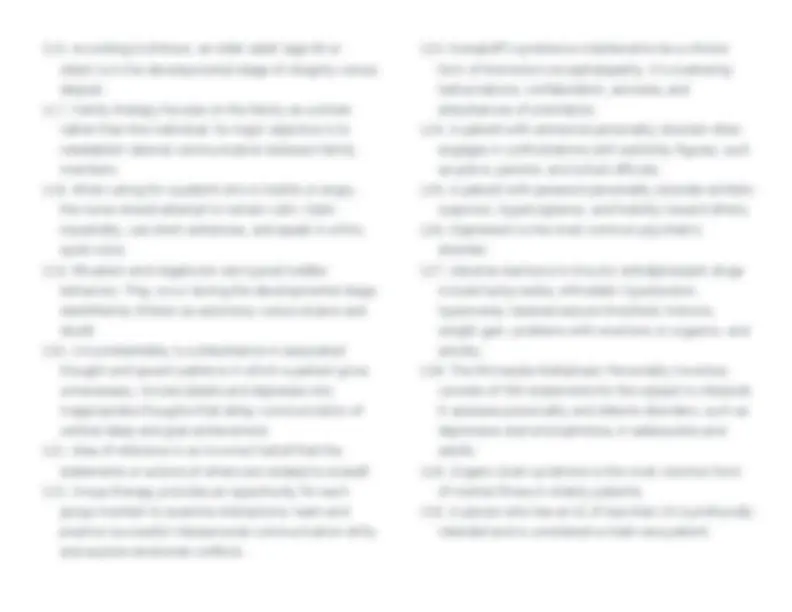
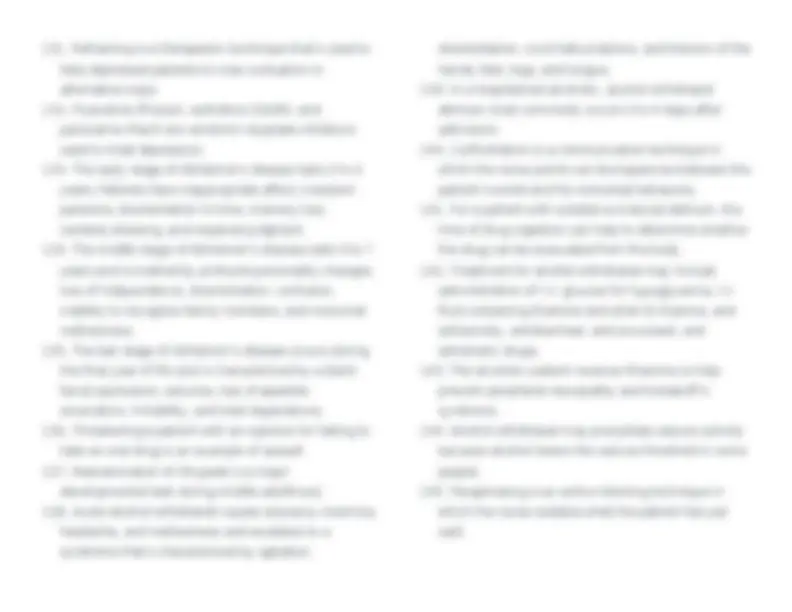
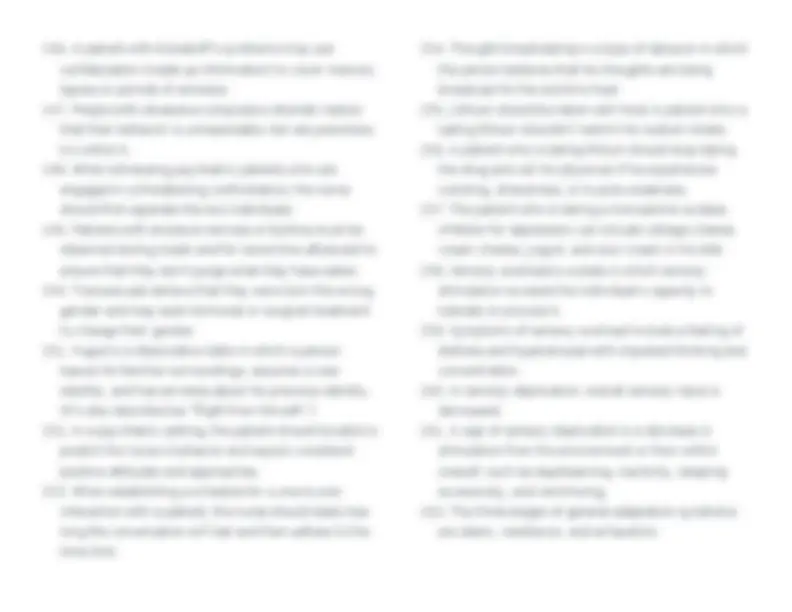
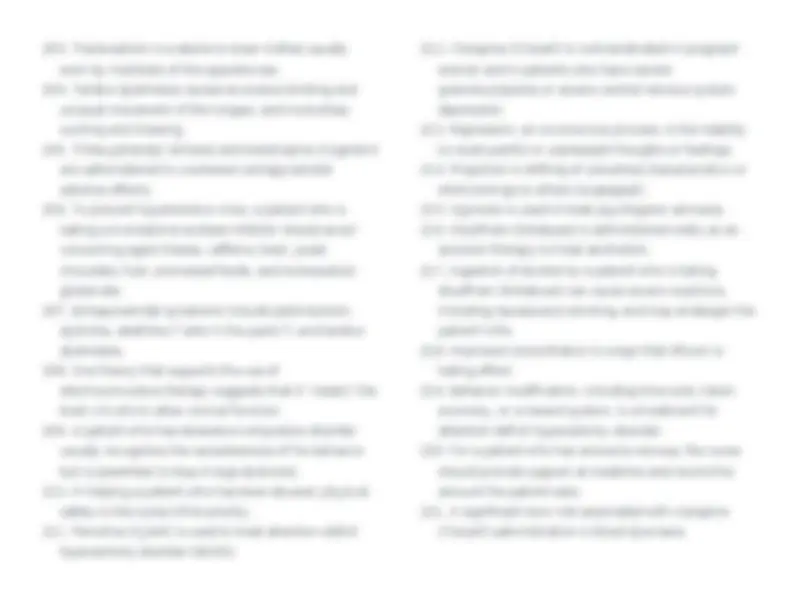
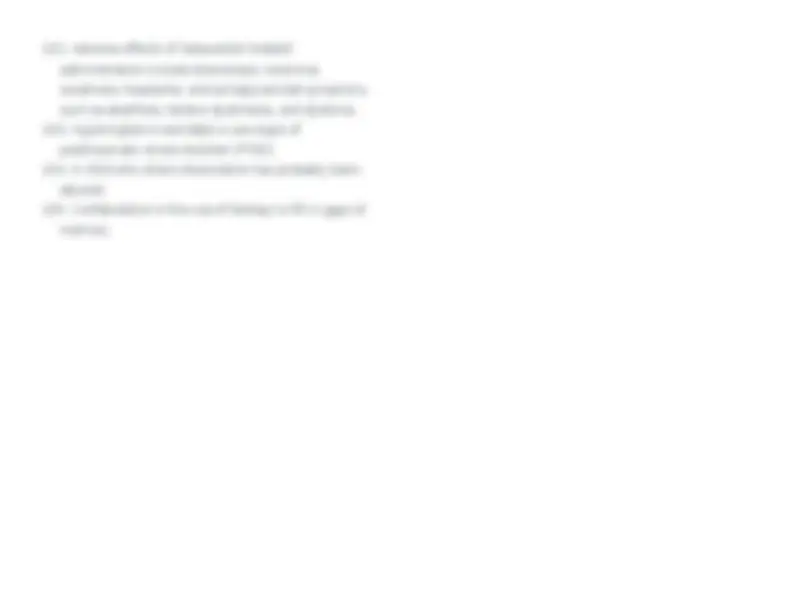


Study with the several resources on Docsity

Earn points by helping other students or get them with a premium plan


Prepare for your exams
Study with the several resources on Docsity

Earn points to download
Earn points by helping other students or get them with a premium plan
Community
Ask the community for help and clear up your study doubts
Discover the best universities in your country according to Docsity users
Free resources
Download our free guides on studying techniques, anxiety management strategies, and thesis advice from Docsity tutors
A list of 96 bullet points related to psychiatric nursing. It covers topics such as the stages of death and dying, defense mechanisms, anxiety, alcohol withdrawal, child abuse, Alzheimer's disease, electroconvulsive therapy, bipolar affective disorder, and psychotropic drugs. Each bullet point provides a concise piece of information that can be useful for nursing students studying psychiatric nursing.
Typology: Lecture notes
1 / 14

This page cannot be seen from the preview
Don't miss anything!









values, and ethics. It continually evaluates thoughts and actions, rewarding the good and punishing the bad. (Think of the superego as the “supercop” of the unconscious.)